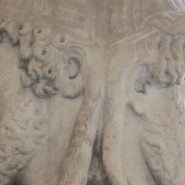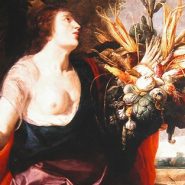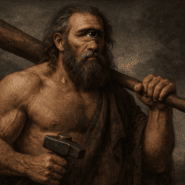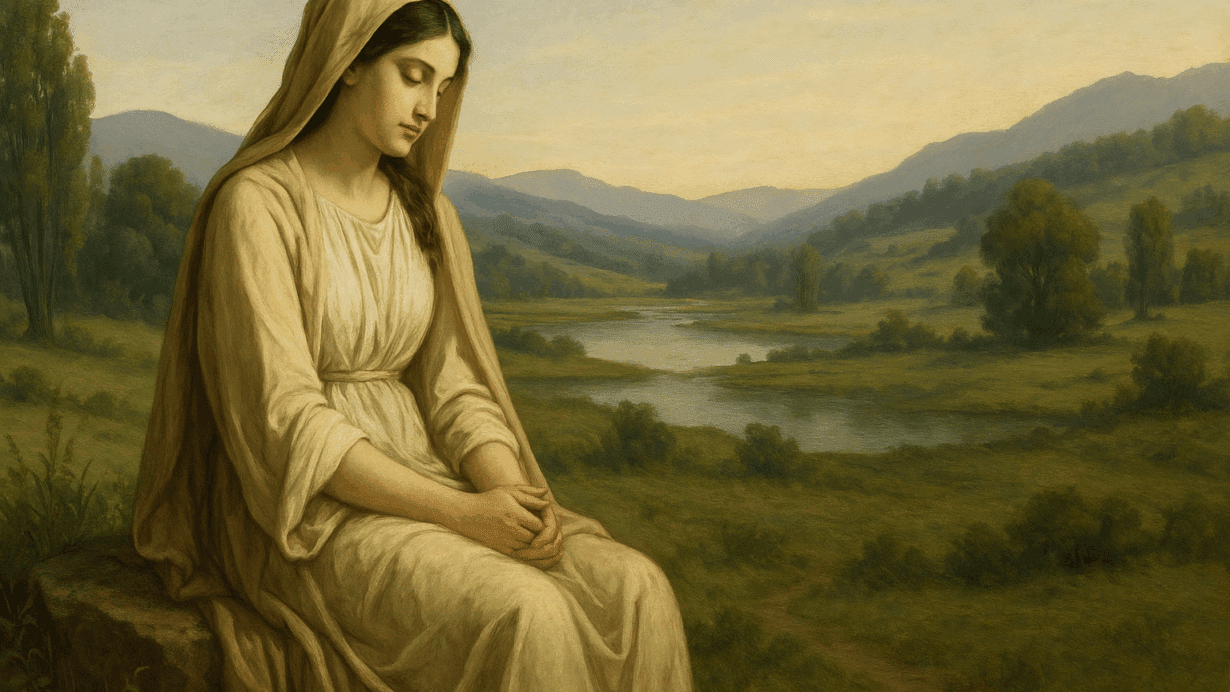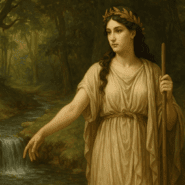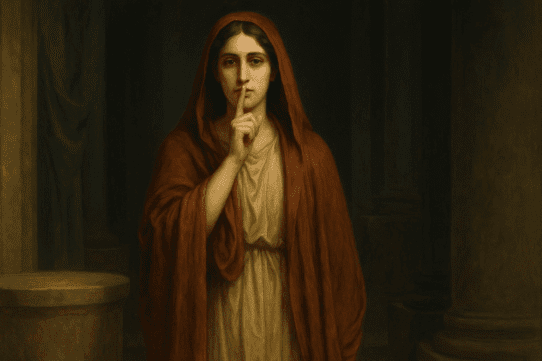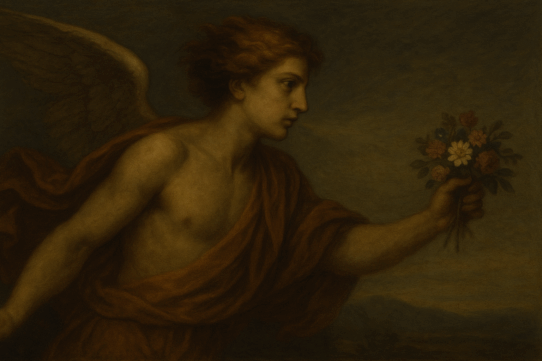Among the countless deities woven into the religious life of early Italy, few remain as quietly compelling as Vacuna, the Sabine goddess of rest, renewal, and hard-earned reprieve.
Though she is not as well known as the major Roman divinities, Vacuna held a lasting presence in the Sabine heartland, where seasons of work and war gave sacred weight to the idea of stopping, breathing, and beginning again. Her cult survived well into the Roman period, sustained by those who understood the value of peace after struggle and calm after exertion.
Vacuna embodies something universally human: the instinct to pause and recover so that life may continue with renewed strength. Her story offers a window into the rhythms of ancient rural life, where rest was both a necessity and a sacred art.
Origins of a Sabine Goddess
Vacuna predates the rise of Rome, originating in the Sabine communities that shared Italy’s central uplands. These early cultures lived by the land, depending on agricultural cycles and seasonal labor. For them, rest was not a luxury but a survival strategy. A deity who presided over moments of respite naturally became integral to their worldview.
The Romans later absorbed Vacuna into their expanding religious landscape through cultural exchange and intermarriage. The Sabines were not foreign to Rome but rather part of its earliest history, connected through myths such as the Rape of the Sabine Women and the subsequent peace forged between the two peoples. As Rome grew, Sabine customs, gods, and festivals blended into the larger Roman identity. Vacuna, though not widely celebrated across the empire, retained her place among those who traced their heritage to Sabine roots.
What Vacuna Represents
Vacuna’s identity is sometimes debated by ancient authors, which is typical of older Italic deities whose functions evolved with time. Still, a consistent theme runs through every interpretation: Vacuna represents rest after effort.
To the Sabines, she symbolized the quiet that follows harvest, the peace after disputes, and the stillness needed to restore the body and spirit. Her domain extended to:
- Rest following labor
- Peace after conflict
- Rejuvenation of the land between seasons
- Personal renewal and recovery
Some Roman writers attempted to associate her with other deities, perhaps trying to understand her by comparison. She was linked to Victory, Ceres, Diana, Venus, and even Bellona, likely because aspects of work, battle, agriculture, and triumph all end in a moment of rest. Yet none of these identifications capture her essence as clearly as the Sabine tradition itself, which honored Vacuna as a goddess of stillness and regained strength.
Vacuna at Reate: The Center of Her Worship
The most important sanctuary dedicated to Vacuna was located at Reate, a central Sabine town known for its fertile valley and strong cultural identity. The poet Horace refers to this sanctuary in his letters, noting that the site had become a place of quiet retreat where he could rest and reflect.
For the Sabine and Roman communities, Vacuna’s shrine offered more than ritual. It was a sanctuary of peace. Travelers sought it after long journeys. Farmers visited after bringing in the harvest. Soldiers arriving home found comfort in her presence. The shrine became a symbol of relief from daily burdens and a place where the spirit could settle.
The valley of Reate itself reinforced Vacuna’s nature. With its gentle hills, calm waters, and protected landscape, it was an ideal setting for a goddess who embodied repose. The land and the deity seemed to speak the same language.
Mythic Echoes and Cultural Meaning
Unlike many Roman deities who appear in extended narratives, Vacuna survives mostly through references from poets, inscriptions, and scholarly discussions. The absence of a dramatic myth cycle around her is telling. Vacuna is not a goddess of conflict or spectacle. Her power lies in the quieter moments of life, the in-between spaces that ancient writers did not always record but that everyday people deeply valued.
Nevertheless, certain themes emerge when studying her cultural presence:
The Human Need for Balance
In a society defined by expansion, labor, war, and civic duties, Vacuna served as a counterweight. She reminded worshippers that rest was not weakness but wisdom, a necessary part of life’s cycle.
The Rural Heart of Early Italy
Her Sabine identity connects her to older Italic traditions, long before Rome dominated the landscape. Through Vacuna, we glimpse the earliest agricultural societies, their concerns, their rhythms, and the values they carried into Roman life.
The Sacredness of Recovery
To honor Vacuna was to recognize that renewal is holy. After sowing and harvesting, after marching and fighting, after striving and struggling, a moment of peace was not simply a pause but an offering.
Vacuna in the Roman Imagination
As Rome grew, Vacuna’s cult did not vanish. Instead, her meaning broadened. Philosophers and poets found in her a metaphor for restful retreat and cultivated silence. She symbolized the deliberate slowing of pace in a society that moved ever faster.
Roman writers sometimes used her name to evoke a restful countryside villa or a season of leisure. Others saw in her a parallel to the concept of otium, the Roman ideal of productive rest that encouraged reading, reflection, and self-improvement.
Even if her rituals were simple, her significance persisted. She reflected a truth that transcends ancient borders: human beings cannot live constantly in motion.
How Vacuna’s Legacy Lives On
Today, Vacuna resonates in conversations about work, stress, and balance. Ancient people recognized that uninterrupted labor led to exhaustion, and they honored a goddess who represented the value of rest.
Her modern symbolic legacy includes:
- The importance of sustainable work rhythms
- The cultural acceptance of rest as renewal
- The idea that peace can be a form of strength
- The recognition that ancient wisdom can still guide modern pressures
For readers of RomanMythology.com, Vacuna offers a rare perspective among the gods: a reminder that moments of quiet carry power, and that the greatest transformations often begin when we allow ourselves to pause.
Conclusion
Vacuna may not command the fame of Jupiter or Venus, but her message has endured longer than empires. In the Sabine valleys, under quiet skies, she embodied everything that happens when work stops and life begins again. Her sanctuary welcomed poets, farmers, soldiers, and weary travelers, offering the timeless gift of renewal.
In honoring Vacuna, we honor the simple but essential truth that rest is sacred.
